Launching A Kayak Through Surf
Getting through a surf zone can be challenging. Having an understanding of the forces in the surf zone is important if you want to master the surf zone. In order to discuss the launching strategy I will over simplify the dynamics in the surf zone.
As a wave travels across the ocean the water near the surface will move up and down as the wave passes. When the wave gets closer to shore and the water depth decreases the wave will pitch up. As this waves gets higher it will eventually collapse when it cannot support itself any longer. When the wave breaks energy is released and the water from the toppling wave now moves toward shore as a whitewater wave. The size of the whitewater wave decreases as it moves toward shore. The whitewater wave is actually moving forward which is different from the wave before it breaks. Before the wave breaks the water is moving up and down.
Our goal when launching through the surf zone is to counteract the forces when necessary and avoid the spot where the wave is breaking. Being able to stay perpendicular to the waves is an important skill to have because our kayak presents the least amount of resistance to the wave when in that position.
Let's look at a classic launch through a surf zone.
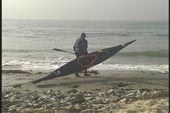
When you are completely ready and all adjustments have been made bring your kayak down to the water. You want to rest the kayak 90 degrees to the water running up the beach. You also want to find the spot where you are not floated out until you are ready to go but not too far up where you have to push a long distance over the shore. It is a little bit of a guessing game. Watch the water action for a while before you actually commit to a spot.
If you did misjudge you can hold your position with your paddle if the surge isn't too strong. If you are too far up the beach you can get out and move closer. The more you watch the water and practice finding the right spot the more accurate your placements will be.
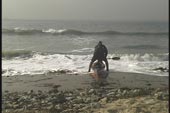
When in my kayak and ready to go I watch the incoming waves so I don't launch myself into a shore break. I try to use the water to float me out. I am always watching where the waves are breaking because that is the area I will try to avoid.
Getting through the surf zone requires some power. However, timing is the most important skill to have. Work on a good forward stroke and reliable supportive strokes. Remember, the waters in a surf zone can be very confused.
Once I am away from shore I paddle quickly away from the shallows in case there are shore breakers. I dislike getting tumbled in shallow water because of the chance of hitting the bottom or rocks or debris.
When I get to deeper water I will slow down and even stop and wait in the surf zone. I like to take a breather and pick the best time to get passed the break zone.
The use of a good supportive reverse stroke is reassuring when I need to stop and back-up. Many make the mistake of just charging through the surf zone. Sometimes they make it and sometimes they become one with the breaking wave. Remember, timing is the key.
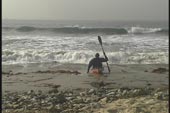
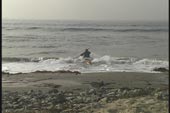
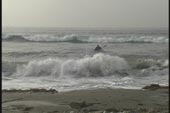
As you are waiting to paddle through the break zone you will have to deal with whitewater waves. Wait until the wave is near you and then paddle directly into it with a strong forward stroke. Once through the whitewater wave stop your momentum to maintain your position until you are sure you are ready to make your final sprint through the break zone. Remember to spear the wave with your paddle to present the least resistance to the force of the water.
As you get through the break zone it is common to end up climbing the steepening wave before it breaks. This is where you need to paddle with purpose and believe you will make it. Depending on the size of the wave and the speed of your kayak you can end up launching into the air going over the steepening waves. I enjoy the free fall on the other side.
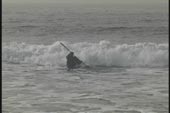
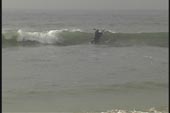
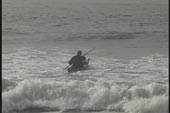
Once through the surf zone it is wise to paddle out a bit farther in case a larger set of waves come in. The area outside of the zone where you readjust for the days paddle is called the staging area. You always need to pay attention while on the ocean but you can relax a little more in the staging area. Your kayak should only move up and down as the waves go by.
I recommend you turn and look at the shore when in the staging area. It is important to see what the beach looks like from the ocean side. Pick features that will not change with the tide changes.
Use the staging area to deploy rudders or skegs if you plan to use them. Move equipment as needed and shed layers or add them as necessary. This is also when you attach paddle leashes. I recommend you wear a helmet when you go through a surf zone. Once outside of the zone you can decide if you still want to wear your helmet.
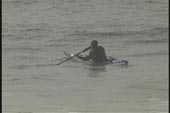
As mentioned earlier, the surf zone is a very challenging place. It takes time and a lot of practice to get comfortable in the surf zone. It is important to study some basic oceanography and hone your edging and bracing skills.
The classic launch strategy discussed above is only a small part of the surf zone experience. The USK video "ABC'S of the Surf Zone" has 180 minutes of comprehensive information which does justice to the skills needed in the surf zone.
Pictures seen above were taken from the USK Video "ABC'S of the surf Zone"
© Copyright USK